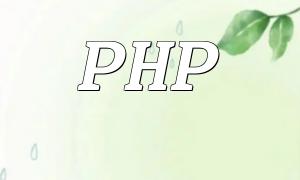In PHP, associative arrays are data structures that store values as key-value pairs. Unlike indexed arrays that use numeric keys, associative arrays use custom string keys, making your code more readable and easier to maintain—especially when handling structured data.
You can create an associative array using the array() function or PHP's short array syntax. Here's an example:
$student = array(
"name" => "John",
"age" => 20,
"grade" => "A"
);
This array defines a student's name, age, and grade, with keys being name, age, and grade, respectively.
To retrieve a value, simply refer to the corresponding key:
echo $student["name"]; // Output: John
echo $student["age"]; // Output: 20
echo $student["grade"]; // Output: A
This approach adds clarity and semantic meaning to your code.
You can update values by referencing their keys:
$student["age"] = 21; // Update age to 21
echo $student["age"]; // Output: 21
This is useful when data needs to be updated dynamically during execution.
Use a foreach loop to iterate through each key-value pair:
foreach ($student as $key => $value) {
echo "Key: " . $key . ", Value: " . $value . "<br>";
}
Example output:
Key: name, Value: John
Key: age, Value: 20
Key: grade, Value: A
Looping allows you to process all data efficiently.
Use array_key_exists() to verify if a specific key exists in the array:
if (array_key_exists("name", $student)) {
echo "The key exists.";
} else {
echo "The key does not exist.";
}
This function helps prevent errors when working with dynamic or unknown data structures.
Associative arrays are a core part of PHP and are especially useful for handling structured data such as form inputs, configuration settings, or database query results. Mastering their creation, access, modification, iteration, and key-checking techniques will enhance your ability to build efficient and maintainable PHP applications.








